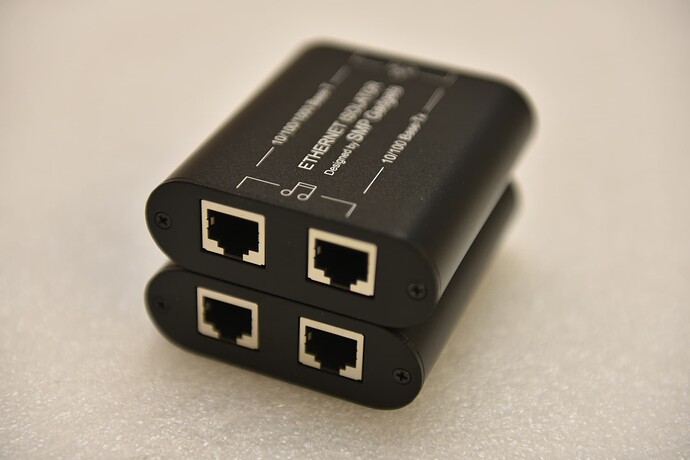Eliminates the electrical and common-mode noise in the Ethernet by galvanically isolating the music streamer from the noisy network. Works without power supplies and can be placed between the music streamer and the switch, and/or between the WiFi router and the switch, bringing the CAS sound quality to the next level.
Traditional isolation utilizes a pair of electrical-optical converters which convert electrical signals to optical signals and then back to electrical signals. These conversions aim to isolate the electrical noise and common-mode noise (CM noise) existing in the Ethernet connections. However, this solution is complicated, expensive (better to have LPS) and occupies space, the effect is not significant. Indeed, this solution can isolate the majority of noise from the rest of the Ethernet but during the last stage of optical-electrical conversion, it introduces noises to the streamer again, and it is also susceptible to CM noise as well.
This Ethernet Isolator refers to the working principle of balanced isolation transformers, it galvanically isolates the streamer from other equipment in the network. It does not only eliminate the CM noise, but also creates an isolated and clean Ethernet for the streamer to work on, and therefore delivers better sound quality.
Each Ethernet Isolator possesses 2 individual channels, which can be used concurrently (between the WiFi router and the switch, and between the switch and the streamer), or connected in series (only applicable between the switch and the streamer). Connecting the channels in series yields a better isolation effect.
The most obvious effect after using the Ethernet Isolator is darker (quieter) background, reduced harshness and better bass response. On the other hand, the sound become more musical and analogue, and listener will feel less fatigue.
*The isolation transformers inside the chip need to take around 10 days to break in
Dimensions (mm): 79(L)x70(W)x24(H)
Data Rate: 1000Mbps x1, 100Mbps x1
YouTube demo (starting from 7:50)
Price: HKD380 (1USD=7.8HKD)
Can ship worldwide, shipping fee incurs.
NOTE:
Some devices may not support 100Mbps (e.g. Lumin U1 mini), in that case you have to use the 1000Mbps channel.





